The Griffin Gate
Notes: Game on...on the radio...Dodgers and Angeles...Dodgers made out...to bottom of first...Lastella Trout Ohtani to bat...oh, it just takes one small thing sometime to help understand the motifs...
quote

An example of the pictorial representations the Mixtecs used for non-verbal communication through writing. Here, in this picture, which is a reproduction of a work from the Codex Zouche-Nuttall, a village is being sacked by some warriors.
https://en.wikipedia.org/wiki/Mixtec_writing
unquote
after putting up my take, I was dismissive of wiki's...but, brief at it is, it might be right...at least, that's what I found finding other captions...I was wondering about these 'lakes' in 'three sided boxes'...there's a lot of them in the Nuttall codex, and the lakes, and three sided boxes, vary in look...and then I read said, if there is an atlatl spear stuck in one of these lakes, or the mountain, whatever, it means it's a Town that has been conquered...up above, in front of the first figure's nose, is an atlatl spear stuck in the mountain!...Trout K...Ohtani up...'kiss it good by'...Shoetime!...homerun...Angels 1-0...Lucroy up...don't know what happened to Calhoun (hit by pitch), fourth up...Pujols night off..Lucroy 2 for 35..and Lastella, first up, Kd, I think...W...Goodwin up...Calhoun reached base...two on...
quote
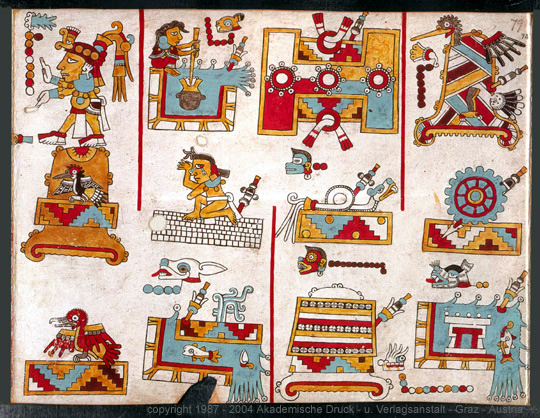
boxed set of the codex from British Museum
http://www.famsi.org/research/graz/zouche_nuttall/img_page79.html
so, in that vignette are nine conquered Towns...the scholars are trying to match the icons with modern Towns, but no luck...oh, Bour waps a home run...'welcome back'...I must say, seeing him in the lineup, I had misgivings!...Bour had been having his troubles, and sent to Triple A...today first game, first pitch back!...Angels 5-0...Angels going to need all the runs they get...it's baseball weather, hot, a little humid...so, there are the motifs I'm puzzling over, but they are part of the names of Towns...the icons that are with the dots are Calendar dates/names of figures, towns, and such...so, those icons in themselves have no meanings, sorta...the meanings are the dates...so, so the meanings of the step motifs in rectangles, the H ball courts, the three sided rectangle lakes, the mountains, the usual denizens of the lakes, and streams, some going and coming from caves, the conch shell, the bivalve clam, all of them, are part of an emblem of a Town...sorta like the motifs on modern flags...those motifs do have meanings, but different for each country...there's maybe like three levels to things...one is just what it is...an atlatl spear, a lake, a mountain...just this is problematic...I don't know what the step motif in the rectangle is!...'a poem should not mean, but be'--Macleash...after the Conquest, the friars made more books with the Mesoamerican artists, and one can see how they stylized, as Spanish figures are shown...but even then, the tradition was getting lost...the artists themselves differed on what motifs meant...so, what a thing is, what a thing means, and, then the Mysterions step in!...meanings within meanings within meanings...Hamlet's 'Pun' Mill...hmmph...Dodgers threatened, but made out...to bottom of second..Lucroy fly out...Lastella up...Lastella is first on the all star ballot for second basemen...W...Trout up...Hamlet's Mill is famous Mysterion book linking ancient motifs from around the world...and Hamlet/Shakespeare loved puns!...the thing: the book; the meaning: the intuitive observation...Trout makes out...Ohtani K...to top of third...lead off first pitch home run...Dodgers 5-1...stadium full of Dodger fans...Tuner hit by pitch...oh, found a term!
quote
The site we are working on is usually called “Calixtlahuaca” today, after the modern town whose land it occupies (San Francisco Calixtlahuaca). Although this name is found in a few documents (such as the Codex Mendoza), the city was known throughout central

The glyph for the toponym (place name)
Calixtlahuaca from the Codex Mendoza is a house. The name means something like
“plain full of houses.” There are problems with this toponym as a name for the
ancient city, however. First, nearly all of the houses and occupation were on
the hill, not on the plain. Second, this name is only found in documents
describing the final pre-Spanish period. Third, it is a Nahuatl term, yet it is
very likely that the people of the city spoke one or more non-Nahuatl languages
in ancient times (the most likely candidates are the Otomi, Mazahua, and
Matlatzinca languages).
unquote
so, Toponyms!...
in that one is the 'post and beam'...the stylized 'canopy' I've gone on and on about...see previous posts back a ways...that too is in the Nuttall pic above at top...here the rectangle is brown color spotted, meaning ground...caption says it is 'plain'...the two round things I've read said represent stars...but here they are just part of the Town's name, like in heraldry...I imagine why that Town uses those motifs is lost to history, but there was likely a story...each Town's toponym likely told a story...if 'plain' is 'spotted brown in rectangle', then the rectangle represents, incloses, a landscape feature...the step motif inside a rectangle is?...what landscape feature?...I dunno...but I can look...I have a pre supposition...brb....
quote
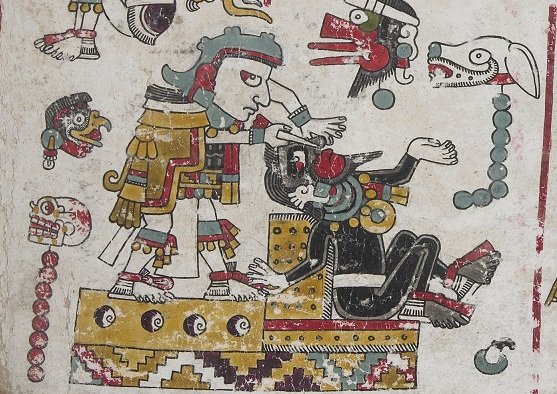
The Codex Zouche-Nuttall presents genealogical histories of the Mixtec dynasties of Tilantongo, Teozacoalco, and Cuilapan. Its pages are painted on both sides in bold blues, reds, and gold. The side on view illustrates the life of Lord 8 Deer, the founder of the Mixtec people, his family history, his travels, conquests, and eventual ascent to power.
The codex includes scenes leading up to and of 8 Deer’s grand nose-piercing ceremony. The nose ornament he wears is an important symbol of his new status as tecuhtli, or dynastic head, and legitimates his right to the Tilantongo throne.
https://unframed.lacma.org/2012/05/15/the-art-of-codices-in-children-of-the-plumed-serpent
Angels made out...to top of fourth...lead off runner on...that vignette, I imagine, is a toponym, and an event...a where and when and what...and like a Greek vase painting vignette of heroes, it alludes to some long epic story, or some such...Angels lose an appeal...no DP...just one out, two on...wild pitch...runners on second and third...K...two down...Dodgers make out...to bottom of fourth...another long game!...
quote
Another hypothesis[15] suggests that Mēxihco derives from a portmanteau of the Nahuatl words for "moon" (mētztli) and navel (xīctli). This meaning ("Place at the Center of the Moon") might then refer to Tenochtitlan's position in the middle of Lake Texcoco. The system of interconnected lakes, of which Texcoco formed the center, had the form of a rabbit, which the Mesoamericans pareidolically associated with the moon.
Still another hypothesis[15] offers that it is derived from Mectli, the goddess of maguey.
These last two suggestions are deprecated by linguist Frances Karttunen,[16] since the final form "Mēxihco" differs in vowel length from both proposed elements. Nahua toponymy is full of mysticism, however, as it was pointed out by the Spanish missionary Bernardino de Sahagún. In his mystic interpretation, Mexico could mean "Center of the World," and, in fact, it was represented as such in various codices, as a place where all water currents that cross the Anahuac ("world" or "land surrounded by seas") converge (see image on the Mendoza codex). It is thus possible that the other meanings (or even the "secret name" Mexi) were then popular pseudoetymologies.

Image of Mexico-Tenochtitlan from the Codex Mendoza
https://en.wikipedia.org/wiki/Name_of_Mexico
unquote
Angels made out...to top of fifth...lead off home run...Angels 5-2...K...one down...fly out to Trout...hit...
quote

art in the destruction of Culhuacan: torching the thatched roof of a temple was a traditional gesture of conquest. Codex Telleriano-Remensis, folio 29r
https://www.mexicolore.co.uk/aztecs/ask-experts/when-the-aztecs-went-to-war-did-they-use-any-special-tactics
unquote
oh, I cant find it...but, there's pages showing the Towns conquered with a flame on their roof, much like in the Nuttall codex, conquest is shown with an atlatl spear stuck into the motifs...wish I could find it...I have it in old post...the Mesoamerican motif for Town, the post beam house, is a lookalike with the Moche canopies, which are a look alike with the naos in Egypt, the canopy shrine on the Sumerian reliefs, on and on to modern canopies over thrones and altars...and now added to the motif for Town are the three sided lakes, the mountains, the landscape rectangles, all that! ...toponyms!...
quote
https://www.cambridge.org/core/journals/latin-american-antiquity/article/moche-revolt-of-the-objects/1F2E97925E71D0FAC88025E6A37866A7
'unfortunately you do not have access'...yaddayaddayadda...found that searching for the Moche canopy...it's a lookalike with the Mesoamerican Town toponyms...that paper must be identifying the elements...Dodgers made out...to bottom of fifth...Ohtani K...and numbers by the post, and beam, and I wish I had access!...hmmph...esh...Angels down 123...to top of sixth...
quote
The Revolt of the Objects Theme involves figures that appear in other themes of Moche fineline art, such as the Presentation Theme. A Priestess figure, identifiable by her double tassel headdress and long braids, and an anthropomorphized Owl Deity seem to preside over the chaos of the scene. Weapons such as clubs, maces, and slingshots have developed human heads and limbs and attack their human masters. The scene references a long-held concept in the Andes of “pachacuti,” a Quechua term that refers to a social upheaval or cataclysm. Scholars have identified congruencies between the Moche vessel imagery and colonial accounts of local legends in both the Andes and Mesoamerica. These legends are also referenced in the sixteenth-century Quechua-language Huarochirí Manuscript and the Popol Vuh narrative of the Mayan K’iche’ people, which was first written down in the eighteenth century.
Browse
https://www.doaks.org/resources/moche-iconography/narrative-themes
unquote
cool...caption one of few, if any, I've seen connecting Moche with Mesoamerica!...just incidentally running through that is the wave, greek key, step fret, motif...like on surface of the Mesoamerican three sided lakes...
same site
lot at that site doesn't open...for the canopy collection...
quote
Dumbarton Oaks
The Bean and Stick Ceremony
unquote
Dodgers make out...to bottom of sixth...familiar now with the rectangle landscape motif, a thought is those step motifs are stacked rectangle landscape motifs--Town toponyms!...
quote
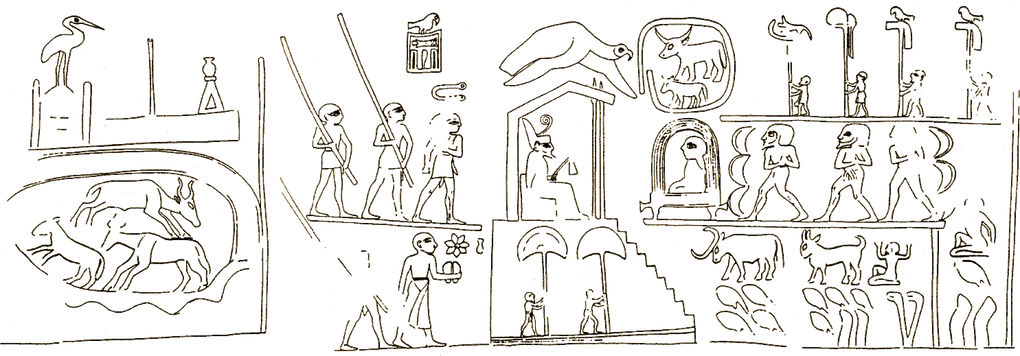
Drawing of the images on the Narmer Macehead.
http://www.ancient-egypt.org/history/early-dynastic-period/1st-dynasty/horus-narmer/narmer-artefacts/narmer-macehead.html
unquote
again, the vignette might be a Town toponym...one of those where, when, what, vignettes...how's journalism go?...where, when, what, who...two down...Bour up...
quote
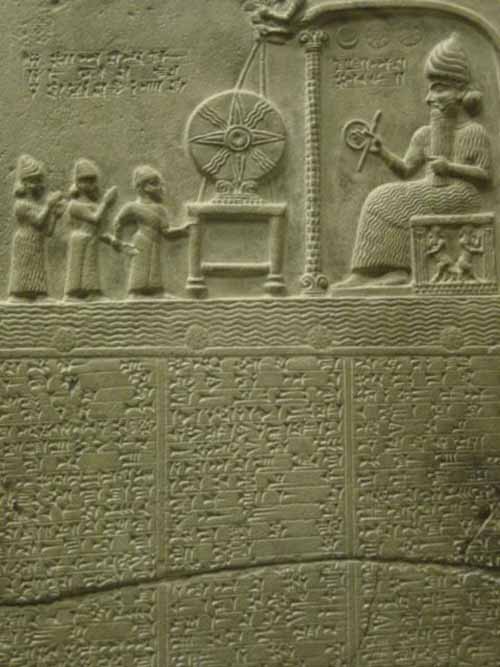
https://www.crystalinks.com/sumerart.html
unquote
and, that one being a tribute scene...K...Tovar up...where's Fletcher!?(shoulder still sore)...that one being a tribute seen, well, Moche one is too...that one steps off to a reach I left off, but can get back to now here!...brb...bloop hit...two Angels on...
quote

https://www.khanacademy.org/humanities/ancient-art-civilizations/aegean-art1/minoan/a/hagia-triada-sarcophagus
unquote
that's the box I went on about back a few posts...Minoan tribute scene...where when what who?...the rosettes are like the Minoans national emblem...and their not the only culture to adopt it...IJN ships have the chrysanthemum on their bows...
quote
The Imperial Seal of Japan, also called the Chrysanthemum Seal (菊紋 kikumon), Chrysanthemum Flower Seal (菊花紋, 菊花紋章 kikukamon, kikukamonshō) or Imperial chrysanthemum emblem (菊の御紋 kikunogomon), is one of the national seals and a crest (mon) used by the Emperor of Japan and members of the Imperial Family.

| Armiger | Naruhito, Emperor of Japan |
|---|
https://en.wikipedia.org/wiki/Imperial_Seal_of_Japan
unquote
oh, I'm wobbling on the stepping stones...on the Minoan box on the left is the pillar with the double ax on top...brb...oh, Dodgers with bases loaded...and Dodger fans loud...yesterday they had like the biggest crowd ever in Anaheim stadium history...and with the seat prices jacked up for Dodger games, Angels well on way to paying Trout's salary!...K...two down...Dodgers make out...to bottom of seventh...
quote
In ancient Crete, the double axe was an important sacred symbol of the supposed Minoan religion.[13] In Crete it never accompanies male gods, but always female goddesses. It seems that it was the symbol of the arche of the creation (Mater-arche).[14]
https://en.wikipedia.org/wiki/Labrys#The_Minoan_double_axe
unquote
Lastella robbed of hit by Peterson circus catch...Trout up...fly out to Peterson, broken bat...Ohtani up...a guess, they'll pitch around him...wop...strike one...1-1...foul, 1-2...bloop hit, broken bat...Calhoun up...stolen base for Ohtani...
quote
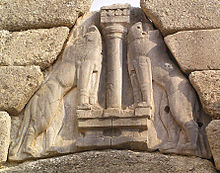
https://en.wikipedia.org/wiki/Lion_Gate
unquote
of course, the Lion Gate is a toponym...I mean, it is the entry to the Minoan Town, so no doubt of its connection...there are modern recreations of what it looked like intact, and painted...ancient Greeks painted everything...my guess of what it looked like: the pillar is like the palace pillars of Knossos, but, it might have zig zags rather than plain, the missing lion heads may have been griffin heads, the roundels may have been painted with rosettes...wop...another lead off home run for the Dodgers...top of
eighth...Angels 5-3...at the base, under the lion body standing paws, emblem of standing on defeated enemy, might be the enemy's toponym, their conquered Town, those 'altars'...I dunno...W...and on top would have been the double ax!...a lookalike to the pillar and ax on the Minoan
box...Dodgers made out...to bottom of eighth...Angels made out...to top of ninth...oh, sometimes google editor hides a line of text I wrote until I hit return...my missing text mystery solved...happens when I leave to another open page and come back...or something...not sure...Dodgers with runner
on second...base hit...Seger pulls up lame...hamstring...still on third...pinch runner...my computer memory full, so maybe reason for glitch...I don't think anyone is out...not good...K...is first base open?...two on?...oh, runner on first staying put...ok Dodgers?...DP on the menu...2-2 count...K...2-1...2-2...3-2...6-3 ground out...'Angels hold on'...put a halo over this one!...day off tomorrow...eesh...glad hitting return brings the text back!...whole section was just gone...and it happens when I use backspace to edit...
:)
DavidDavid








No comments:
Post a Comment